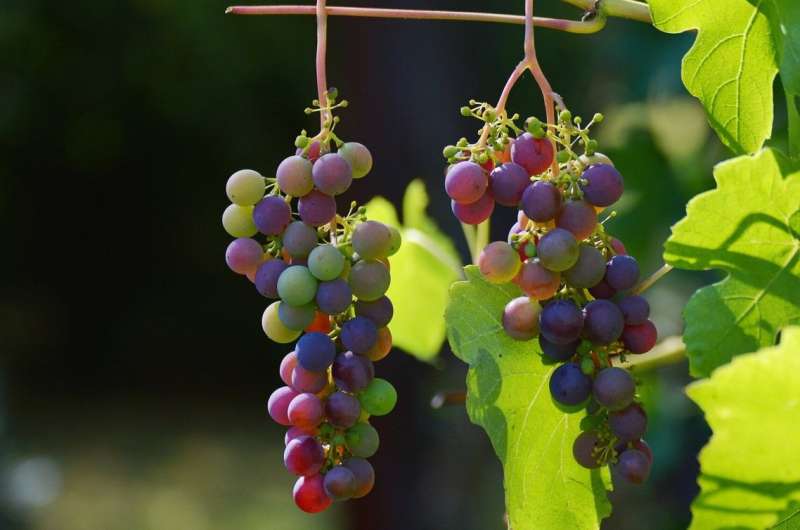March 3, 2023 report
This article has been reviewed according to Science X's editorial process and policies. Editors have highlighted the following attributes while ensuring the content's credibility:
fact-checked
peer-reviewed publication
trusted source
proofread
Tracing the history of grape domestication using genome sequencing

A large international team of scientists with various backgrounds has discovered that there were two domestication pathway events for grapes that led to their use in winemaking. In their paper published in the journal Science, the group describes conducting the largest-ever genome sequencing of grapevine varieties, mostly during pandemic lockdowns. Robin Allaby with the University of Warwick, has published a Perspectives piece in the same journal issue outlining the work done by the team.
Humans have been making wine from grapes and eating table varieties for a very long time, yet until now, little of their evolutionary history was known. It has long been assumed that the cultivated wine grapevine Vitis vinifera, was first domesticated in some parts of Western Asia, and that all of the major varieties used today came from them. It has also been assumed that wine grapevine varieties were cultivated before the varieties that were grown for eating, the so-called table varieties. In this new effort, the researchers found evidence suggesting that both assumptions are wrong.
The work involved obtaining and studying the genomes of 2,448 grapevine samples collected from 23 sites involving 16 countries—the samples included both wild and domesticated grape varieties. The researchers created a chromosome-level genome of Vitis sylvestris and then sequenced 3,186 variety collections using it as a reference.
They discovered that there were two geographic areas where grapes were first domesticated, one in the Caucasus, the other in a western part of Asia. The data also showed that domestication in the two regions happened at roughly the same time—approximately 11,000 years ago—and also coincided with the initial stages of agricultural farming. The team also found that table grapes were being domesticated at roughly the same time.
The researchers also found several genetic factors that played a role in the domestication of grapes, which they note could be used to improve the winemaking process, particularly as many areas where grapes are grown are expected to experience environmental changes as global warming continues.
More information: Yang Dong et al, Dual domestications and origin of traits in grapevine evolution, Science (2023). DOI: 10.1126/science.add8655. www.science.org/doi/10.1126/science.add8655
Robin G. Allaby, Two domestications for grapes, Science (2023). DOI: 10.1126/science.adg6617
Journal information: Science
© 2023 Science X Network



















